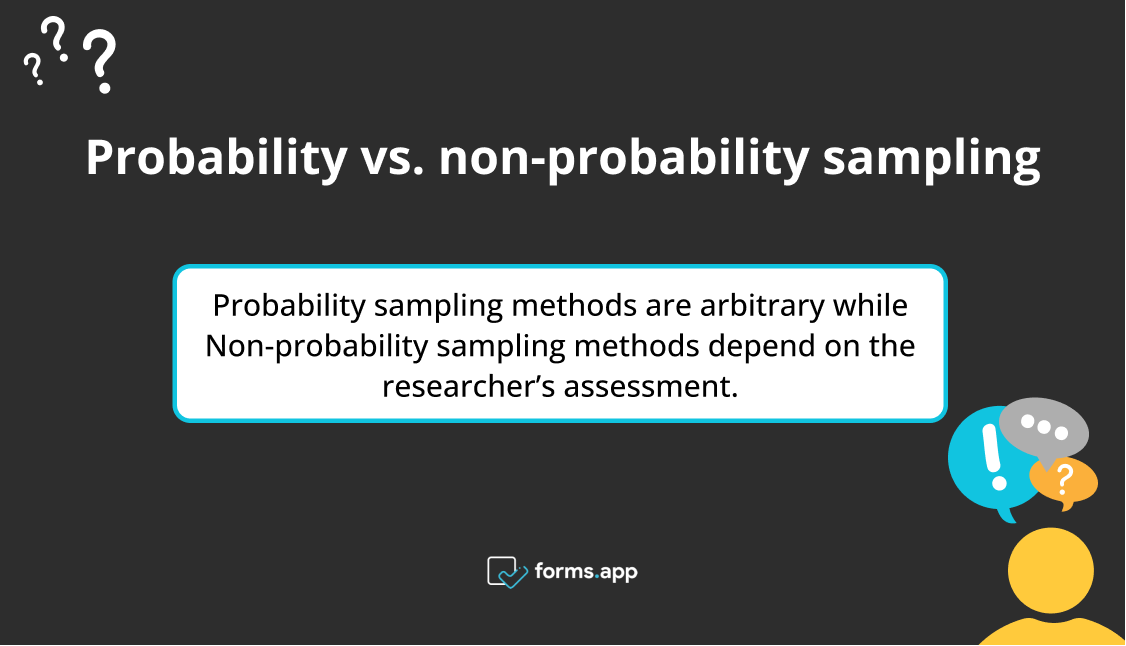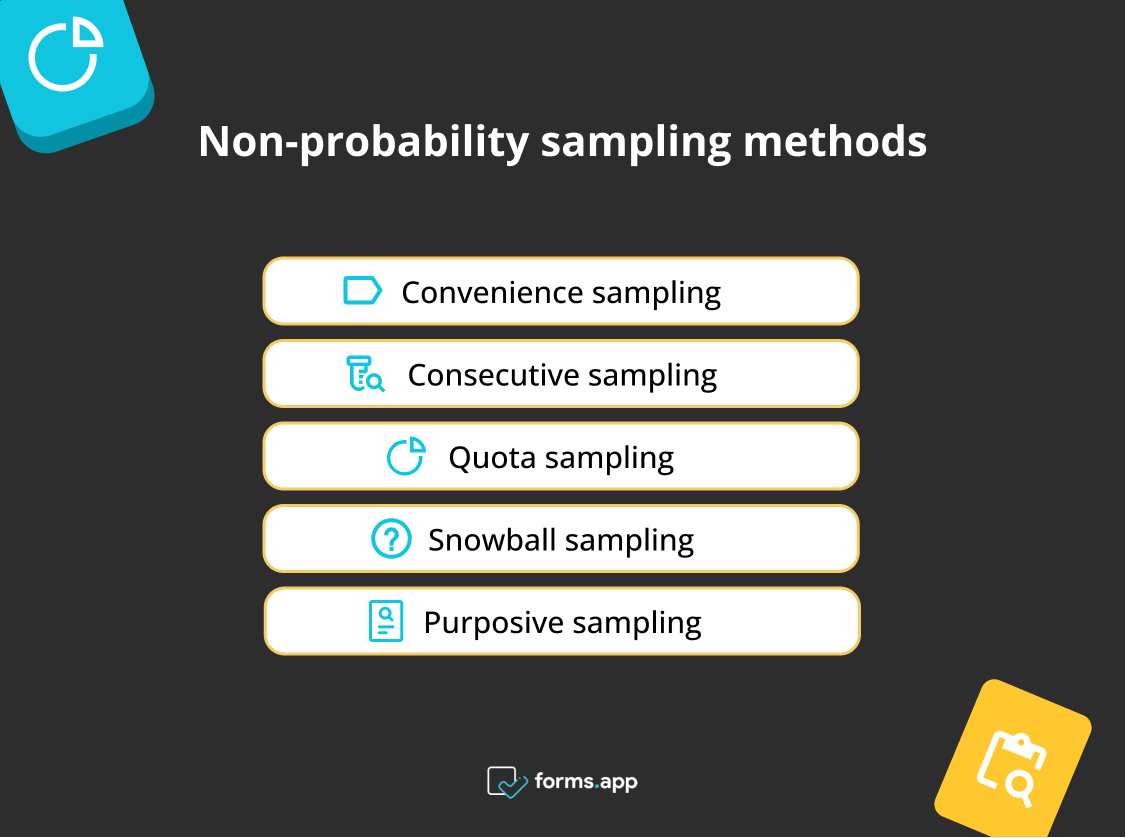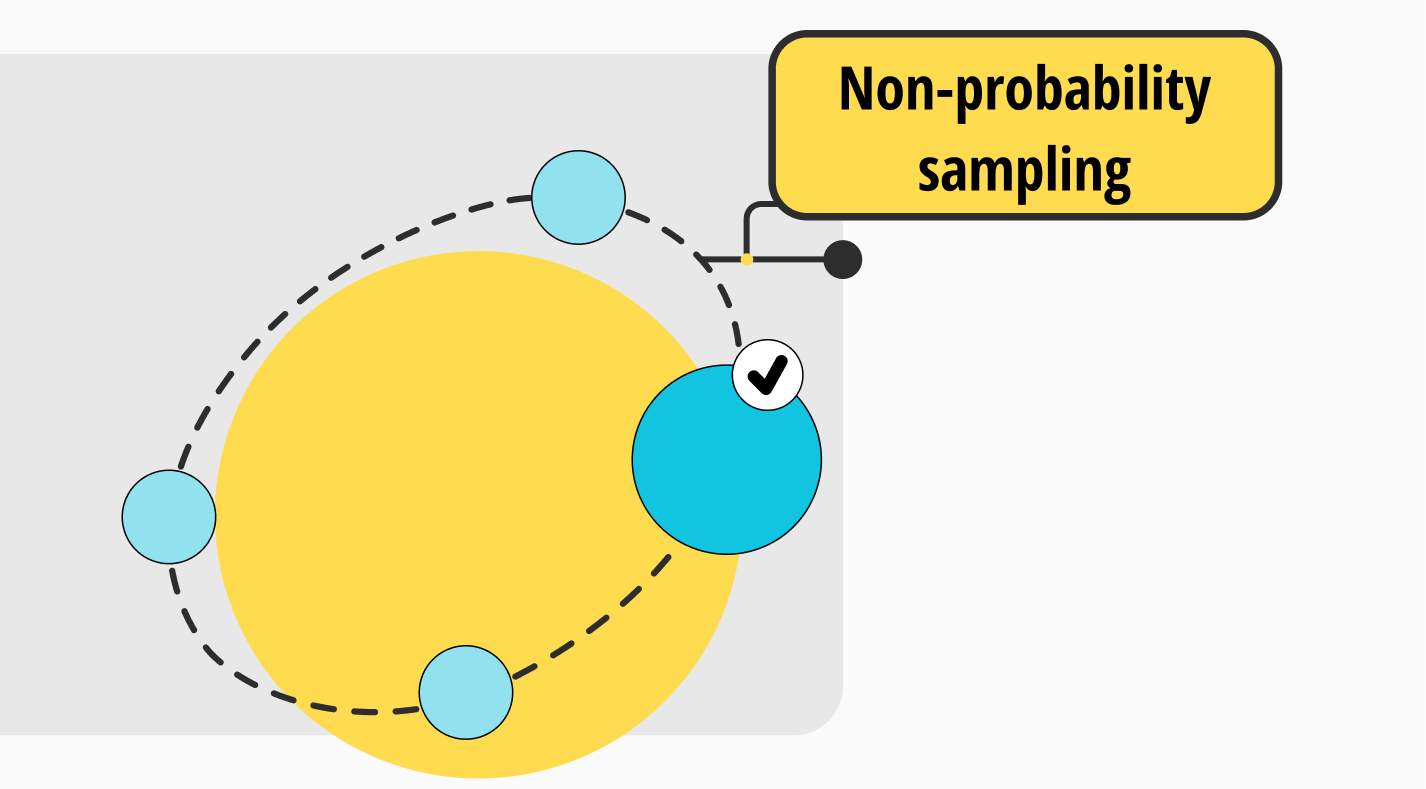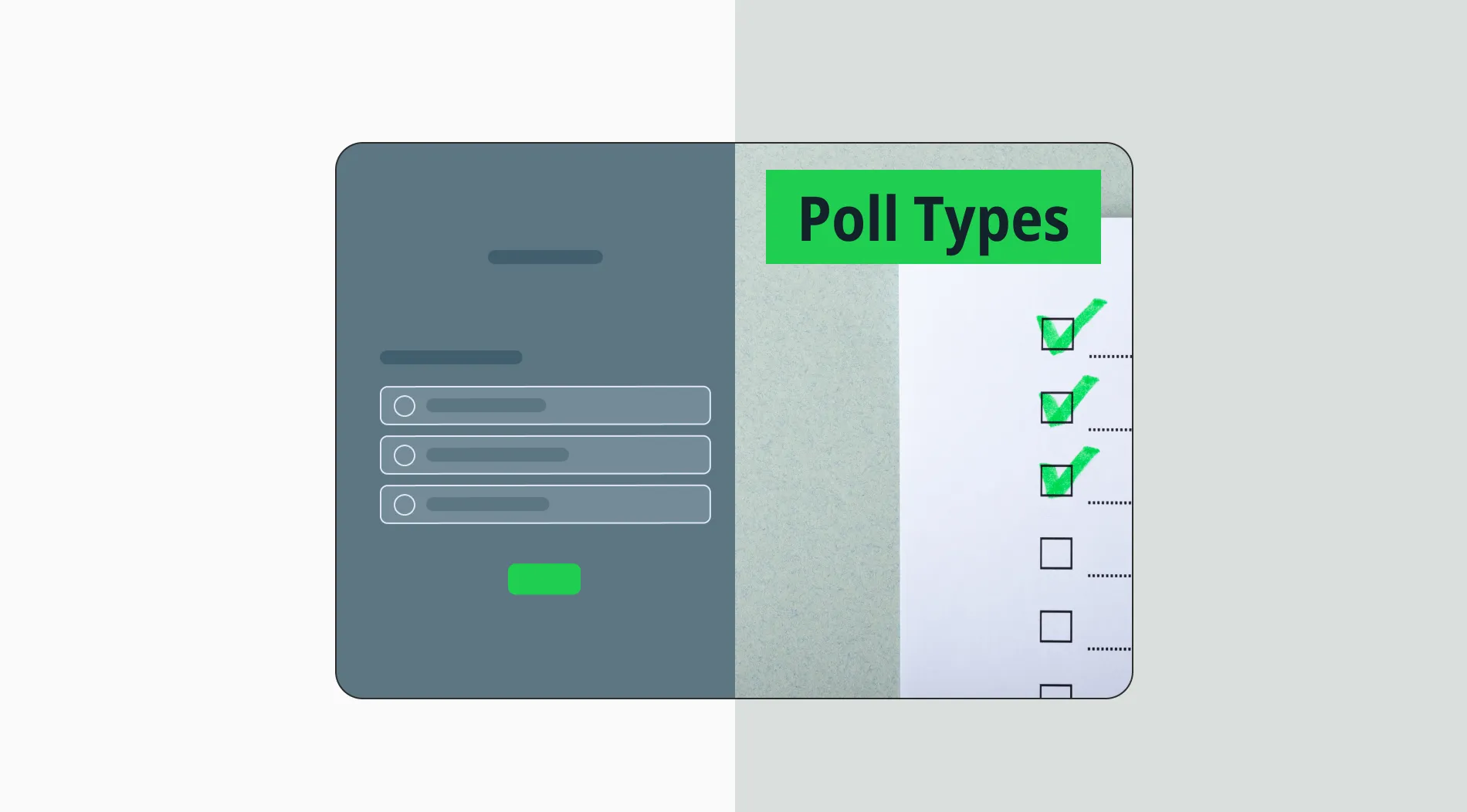An essential component of every research study is sampling. Selecting the best sampling strategy for your particular research issue is crucial since it might improve the validity of your findings. Many sampling techniques fall into two categories as probability sampling and non-probability sampling.
The most significant difference between the above two sampling methods is whether the sampling is based on randomness. The non-probability sampling is typically used when access to an entire population is limited or unnecessary. This article will explain the definition of non-probability sampling technique, examples of non-probability sampling, and the advantages and disadvantages of non-probability sampling.
What is non-probability sampling?
Non-probability sampling is a subset of sample selection. It uses non-random methods to choose a group of subjects for a study. This sampling is used when the population characteristics cannot be individually identified or are unknown. It does not depend on randomness.
In Layman's terms, non-probability sampling is a method where the researcher chooses samples based on personal assessment instead of randomly. With non-probability sampling, research participants don’t all have an equal chance of being selected.
This method is more dependent on the researcher’s aptitude for choosing components for a sample. The sampling results may be skewed, making it difficult for all components of the population to participate evenly in the sample. The most beneficial uses of this sampling are in exploratory investigations like pilot surveys.
Probability vs. non-probability sampling
Non-probability sampling does not concentrate on precisely representing all members of a large population, in contrast to probability sampling and its methodologies. The researcher's subjective assessment is the basis for non-probability sample selection.

What’s the difference between non-probability sampling and probability sampling?
As non-probability sampling methods are not arbitrary, not every person in the population has an equal chance of participating in the study. Here are the differences between probability sampling vs. non-probability sampling:
- Random vs. deliberate selection: Probability sampling uses randomization to choose a sample rather than making a conscious decision. On the other hand, non-probability sampling approaches choose objects or people for the sample depending on the researchers' objectives, knowledge, or experience.
- Full population knowledge vs. changing population knowledge: Nonprobability sampling doesn’t need to know the identities of every person in the population before selection. On the other hand, probability sampling techniques should know to choose a representative sample size.
- Depth vs. objectivity: Probability sampling aims to be objective in the sample selection method. Non-probability sampling, on the other hand, aims to go deeper into an area.
- Unequal chance vs. equal chance: Each person in the population has an equal and fair chance of being chosen to be a part of the smaller sample when using probability sampling. In contrast, individuals don’t have an equal chance of being chosen in non-probability sampling.
Non-probability sampling methods

The list of non-probability sampling methods
Choosing the most suitable non-probability sampling method for your research is crucial to continue your study correctly. As previously pointed out, there are several types of non-probability sampling for the data collection process:
1. Convenience sampling
A popular non-probability sampling method is convenience sampling, in which individuals are selected based on convenience and availability. It is a simple and inexpensive approach to assemble a sample of individuals and conduct a survey to collect data. It is typically employed for rapid user surveys or pilot testing.
2. Consecutive sampling
Consecutive sampling is the research practice using sample participants who readily satisfy the inclusion criteria. You carry out the study till you come to a particular conclusion. Samples are picked depending on availability. Each result is examined before moving on to the following sample or topic.
3. Quota sampling
Quota sampling is dependent on a predetermined criterion. It chooses the population’s representative sample. The proportion of traits or features in the sample should match that of the population. Until precise ratios of specific data are obtained or adequate data in various categories are gathered, elements are chosen.
4. Snowball sampling
When the population is highly uncommon and unknown, snowball sampling is employed. Therefore, you will enlist the assistance of the first element you choose for the population. Then, you can ask him to suggest other components that will match the requirements of the sample. As a result, the population grows like a snowball due to this referral strategy.
5. Purposive sampling
Purposive sampling entails actively deciding what the sample needs to contain and selecting participants in accordance with that decision. In this approach, you may determine what the sample needs to contain to achieve the study’s goals using your knowledge of the population and your comprehension of the research's purpose.
Non-probability sampling examples
Researchers will employ the non-probability sampling method when resources or time are lacking. This sampling technique can be used to determine whether a particular issue needs in-depth investigations or when you don’t want the results to be generalizable to the entire population. Here are some examples of this sampling method.
- In practice, the sample chosen at a company for researching the career ambitions of 300 workers should include an equal representation of men and women. Consequently, there have to be 150 men and 150 women. Since this is improbable, the researcher chooses the groups or strata using quota sampling.
- Researchers also use this sampling to study a specific patient ailment or rare disease. To create a subjective sample for the study, researchers might ask individuals to provide references for others with their condition. Researchers may seek help from patients to refer to other subjects suffering from the same disease.
- If there is no information on the number of homeless people, you can ask one to interview them about their experiences. If one person accepts, you can request to be introduced to other homeless individuals. This is a snowball sampling method example.
Advantages and disadvantages of non-probability sampling
The non-probability sampling method frequently reveals the prevalence of a particular feature or set of traits in a community. This technique is usually used by researchers who want to undertake qualitative research, exploratory, or pilot studies. This widely used sampling method has disadvantages and many advantages.
Advantages of non-probability sampling
- Researchers can more quickly and effectively conduct surveys in the real world by using this sampling approach. Since non-probability sampling needs less time and money than probability sampling, it is frequently more affordable.
- In many situations, non-probability sampling is more practical since the researcher may choose volunteers who are conveniently accessible.
- Non-probability sampling allows for greater flexibility since it allows researchers to choose participants based on particular qualities or aspects that are not accessible with probability sampling.
- Researchers can save time using this sampling method because they don’t need to create a sample frame or gather data on the entire population.
Disadvantages of non-probability sampling
- Non-probability sampling can have considerable sample biases since the sample is not randomly selected, and this can result in the over or representation of particular population segments.
- Non-probability sampling is less likely to yield outcomes that represent the genuine population fairly. It may reduce the study’s external validity.
- The results of non-probability sampling are less generalizable to the broader population since they are less representative.
Key points to take away
In conclusion, you should think about non-probability sampling if you want to conduct research that provides everyone an equal chance to participate. Additionally, you might consider adopting the non-probability sampling approach if your budget is limited and you have a short time.
Non-probability sampling differs from probability sampling in that probability sampling involves random selection, whereas non-probability sampling does not. In this article, we have shared the definition of non-probability sampling, its advantages and disadvantages, the differences between non-probability and probability sampling, and examples of non-probability sampling. Reading this article will give you detailed information about non-probability sampling.
Sena is a content writer at forms.app. She likes to read and write articles on different topics. Sena also likes to learn about different cultures and travel. She likes to study and learn different languages. Her specialty is linguistics, surveys, survey questions, and sampling methods.



